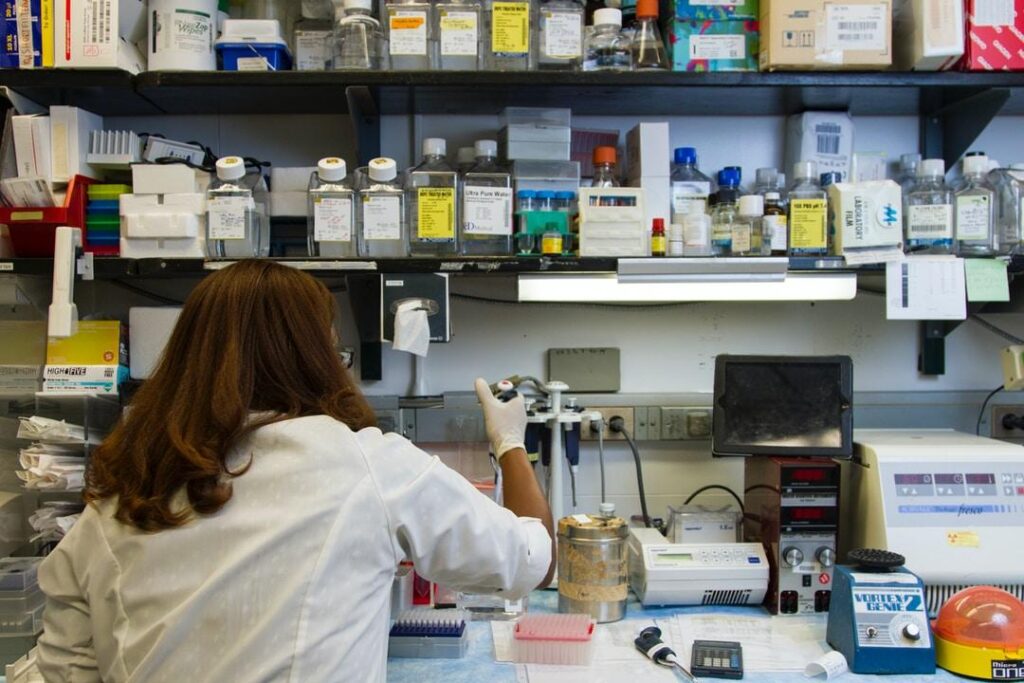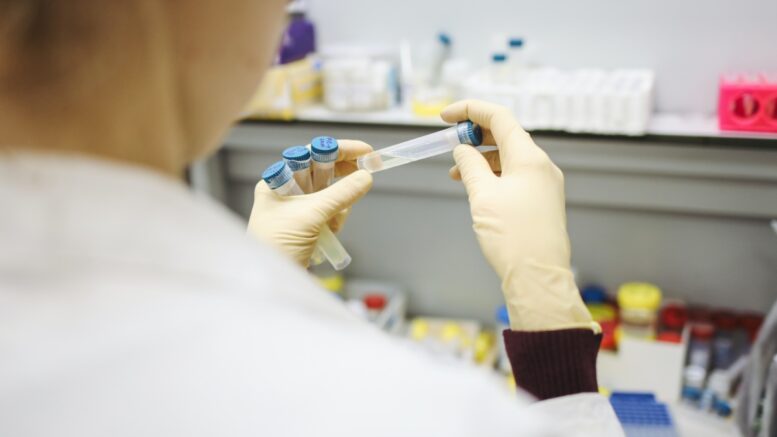ELISA is a technique to find antigens in a biological sample. The acronym stands for Enzyme-Linked Immunosorbent Assay, which means the kit uses enzymes to find antigens from an insoluble substance.
Of course, there is more to any technique than a breakdown of their main parts, so let’s go into detail.
A Basic Overview Of ELISA Kit
For elisa kits to work, it needs antibodies to find a specific antigen. To do this the scientist using the kit needs to be aware of antibody-antigen interactions. This means knowing what antibodies will connect to which antigens.
Using a petri dish, the antigens need to be immobilized and connected to a solid surface. Depending on what type of ELISA kit you use, the immobilized antibodies can be “stuck” directly or try to capture the antigens.
When the antibody makes contact, it releases a color signal, telling the scientists how much (if any) of the antigen exists in the petri dish.
To better explain what this means, you need to understand the four different types of ELISA kits.
The Four Types Of ELISA Testing
Generally speaking, there are four ELISA tests. These are Sandwich ELISA, Competitive ELISA, Direct ELISA and Indirect ELISA.
Direct ELISA
This version of the ELISA kit is the most simple. Using a multi-well plate, the antigen becomes immobilized to the surface. An antibody is then added to the solution, searching for a specific protein to target. Once found, the antibody binds to the antigen.
It releases a color once bound. Thereby showing the researcher how many antigens are in that petri dish.

Indirect ELISA
The Direct ELISA test targets the antigen directly, using a simple method. The Indirect ELISA test has an additional step that amplifies the detection process. It does this by adding a second antibody.
The first antibody searches for the antigen and binds to it. The second searches for the first antibody and binds to that. Only then the signal to the 10x concentrated elisa plate coating solution is released.
This may seem like an unnecessary step, but depending on what antibodies you have available, and what antigen you are searching for, you may not find the perfect fit. Using the indirect method can help you reach the same conclusion for a harder-to-detect antigen.
Sandwich ELISA
Most researchers will use a Sandwich ELISA. It uses two antibodies to find the antigen. The first is on the bottom layer of the petri dish. It’s coated to that surface ready to capture any antigens that fall on it.
The sample is then added allowing it to bind to the first set of antibodies. The second set of antibodies is included and then the substrate concludes the test.
The substrate only produces a signal if it finds the formula for antibody 1 + antigen + antibody 2. Due to this added complexity, Sandwich ELISA tests are extremely specific – hence its popularity.
Competitive ELISA
The Competitive ELISA is specific, like the Sandwich, however, it works best on small molecules. Because of this, most researchers only use the Competitive ELISA when their sample is too small for the Sandwich.
Like the Sandwich, this method starts off with an antibody layer at the bottom of the petri dish. Then the secondary antibody and antigen are released at the same time. They compete for the first antibody.
The end product results in varying signals. The more antigens present in the sample the clearer the signal will be. This helps a researcher figure out how concentrated the antigen is in the original sample.
The Pros And Cons Of ELISA Testing
As with everything, there are reasons to use this method and reasons to avoid it.
Pros
First, we should note that ELISA testing is highly sensitive, which means you can find results even with a small sample.
Secondly, the method is easy to complete, which means that less experienced researchers can take on this task without worry.
Thirdly, this is a quantitative method. Although the results create colors, the color concentration can be turned into a number format, creating a quick and easy quantitative result.
Lastly, this method can be used for multiple different sample types. Saliva, urine, cells, plasma, the list continues.
Cons
The results happen quickly, which means the readout needs to be obtained as quickly as possible.
Secondly, the type of information you can gather is rather limited. You only find out if the antigen is present or not.
Summary
Using the right method can help you create a speedy result. Using the wrong method may end up with false negatives.
